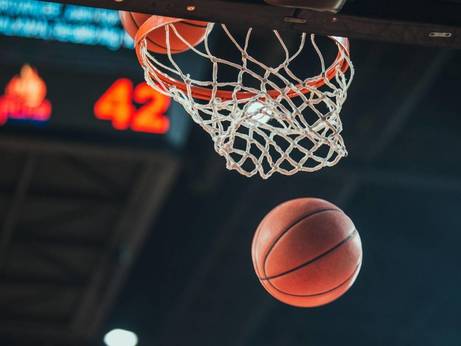
Early on in my life, there was no hiding the fact that I wasn’t destined to become an NBA superstar. I lacked the necessary skills and the ability to hit shots or the backboard for that matter. Make sure your child gets off on the right foot by using the appropriate sized basketball.
So what size basketball should your child use?
Ages 4-8 should use a size 3 or 4 basketball, ages 9-11 a size 5 basketball, boys age 12-14 and girls 12+ a size 6 basketball, and size 7 basketballs are for boys 15+. Age ranges may vary slightly for each size. There are also different types of basketballs that are used for certain court surfaces.
Now that we know what size basketball your child should use, let’s take a look at some of their characteristics. For information regarding ball circumferences and weights, we invite you to read on.

Size 7 Basketball Dimensions
Boys will start to use a size 7 ball around the age of 15 when they enter high school. Size 7 balls are the official size for high school, college and the pros.
Size 7 metrics – Circumference: 29.5”, Weight: 22 oz
Size 6 Basketball Dimensions
Size 6 balls are the official size of girls 12+. This is the size girls will use for high school, college and the pros.
Size 6 metrics – Circumference: 28.5”, Weight: 20 oz
Size 5 Basketball Dimensions
Known as the standard youth ball, size 5 balls are designed for boys and girls ages 9-11.
Size 5 metrics – Circumference: 27.5”, Weight: 17 oz
Size 4 & 3 Basketball Dimensions
Size 4 and 3 balls are often interchangeable, but size 3 balls are more widely used. Size 3 balls are known as “minis” and are suited for ages 4-8.
Size 4 metrics – Circumference: 25.5”, Weight: 14 oz
Size 3 metrics – Circumference: 22”, Weight: 10 oz
The Importance of Choosing the Right Basketball Size
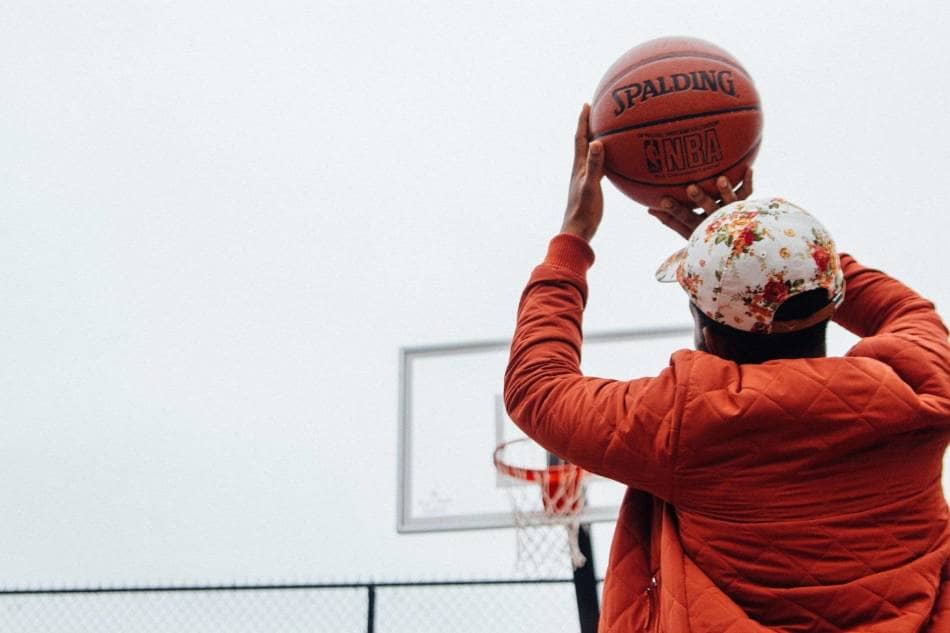
Kids need to play with the correct ball size growing up. Playing with the incorrect ball size can lead to the creation of bad habits.
For example, if a kid plays with a ball that’s too heavy he may start to compensate for the additional weight by using both arms and lunging forward while shooting.
The size of the ball can also play a role in shooting and ball-handling techniques, as kids may have to adjust their hand placement for an over-sized ball. It’s important kids play with the ball that’s best suited for them so they don’t develop bad habits. Down the line, some of these habits may be harder to break than others.
Another benefit of using the right sized ball is that kids will have more fun. By using the right-sized ball, kids are more likely to use the proper technique when shooting and are therefore more likely to make more shots. Kids who can score will have more fun because they’re making an active contribution to their team and building confidence in the process.
The Different Types of Basketballs
Basketballs are generally made of leather, synthetic leather or rubber. Let’s take a look at the benefits of each and help you determine what type of basketball you or your loved one should use.
Leather Basketballs Characteristics
Leather balls tend to be the softest and most comfortable balls on the market. They tend to be more consistent, offer better grip and get softer as you use them. They are also designed for indoor courts.
Don’t try using leather balls on outdoor courts as they will split and crack. These balls are specifically designed for indoor courts and are more expensive than synthetic and rubber balls.
Composite/Synthetic Leather Basketballs Characteristics
Unlike leather balls, synthetic leather or composite basketballs are designed for indoors and outdoors. While the quality isn’t quite that of leather balls, synthetic balls tend to be similar in feel to indoor balls.
Synthetic basketballs also don’t need to be broken in and don’t break down as fast as leather balls. These balls are usually cheaper than their leather counterparts.
Rubber Basketballs Characteristics
Rubber basketballs are great for beginners and recreational players. You won’t break the bank buying one and you’ll be able to use them inside and outside.
They won’t offer the same kind of feel and quality as leather or synthetic balls, but they are resistant to the elements and won’t break down nearly as fast as the other types of basketballs.
Basketball Courts: Knowing the Difference
Much like the different types of basketballs, there are 3 main court types: hardwood, concrete and multi-purpose.
Hardwood Basketball Courts
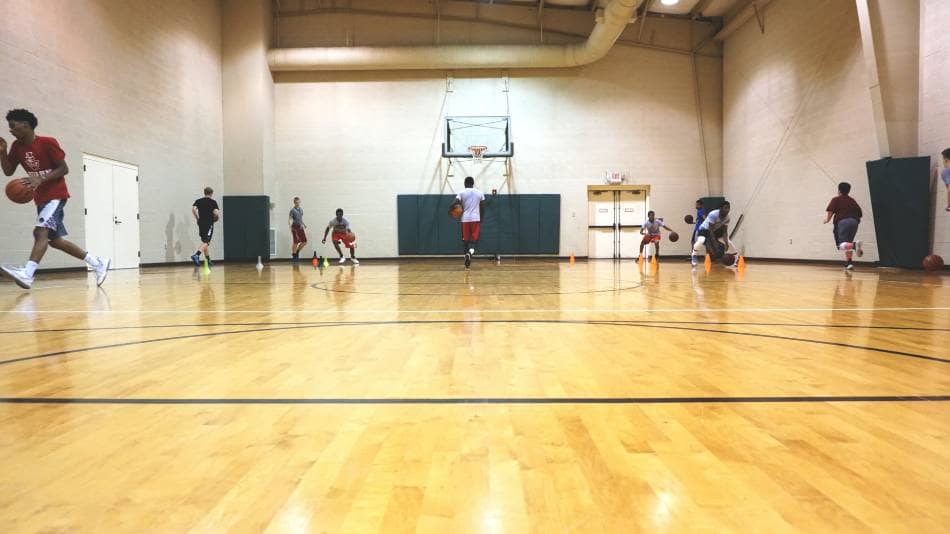
Hardwood courts are the most popular of the three floor types and are ideal for indoor use. These courts are utilized at the collegiate and pro levels and are favored at the high school level as well.
Like leather balls, hardwood courts help provide a consistent bounce. Hardwood floors are compactly built to keep dirt out and require little maintenance as a result. They are not suitable for outdoor use.
Concrete Basketball Courts
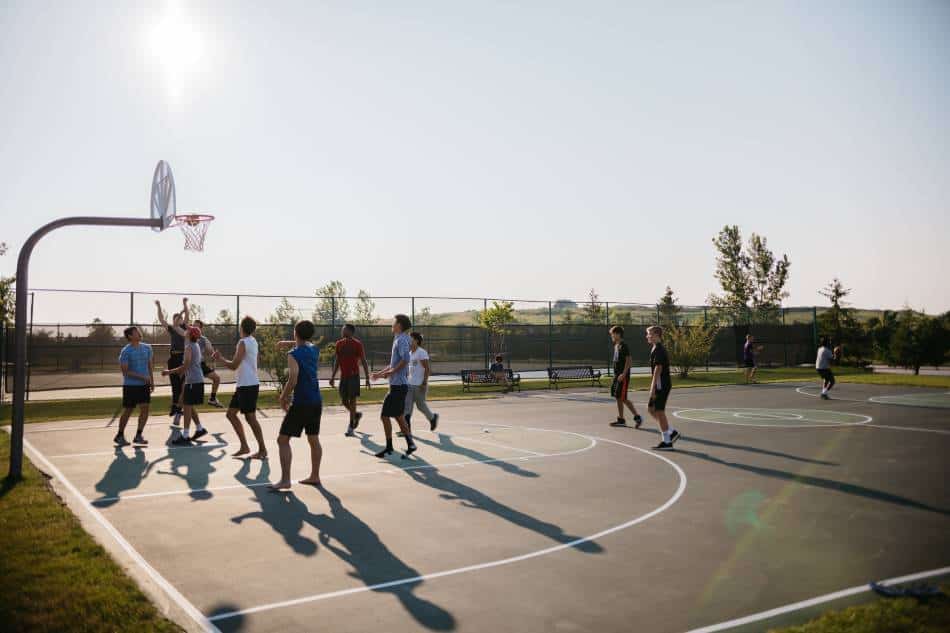
If you’ve ever played basketball at a local park, you’ve played on a concrete court. These courts are designed to withstand the elements. They require more maintenance and provide a less consistent bounce than indoor courts.
Multi-Purpose Basketball Courts
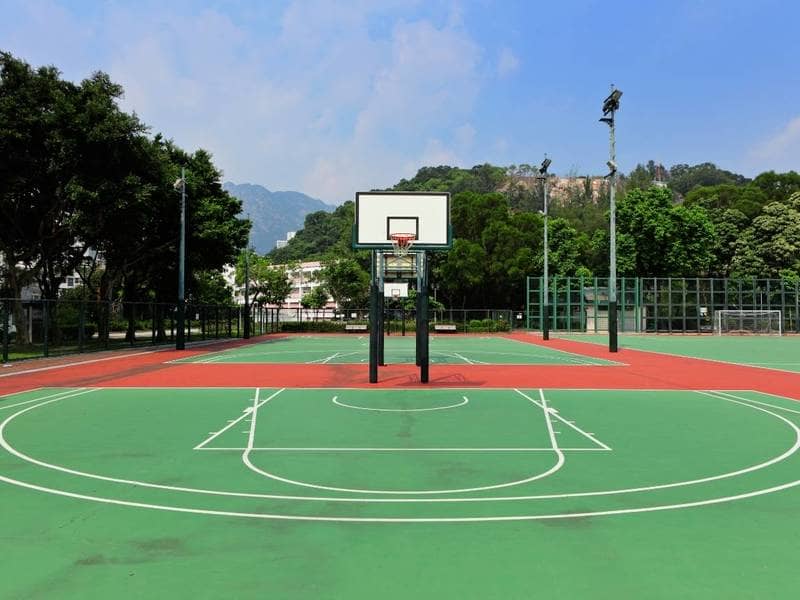
Multi-Purpose courts have a plastic flooring that’s built over a concrete base. They provide good traction and a more consistent bounce than courts solely designed for the outdoors.
Multi-purpose courts are also softer than concrete courts, which results in fewer injuries. Lastly, multi-purpose courts are good investments as they work for other sports such as volleyball and soccer.
Rim Height for Youth Basketball

The height of the rim should correspond with your child’s age. Younger kids should use shorter rims because they aren’t as developed.
Kids are likely to get discouraged if they’re not making baskets due to the rim being too high. Playing on courts with shorter rims encourages kids to work on their fundamentals without sacrificing their form to make shots.
According to USA Basketball, ages 7-8 should shoot on 8’ baskets whenever possible and that ages 9-11 should go with 9’ baskets. Children younger than 7 should play with a rim more suited to their age and height.
USA Basketball also recommends that everyone 12+ should play with a 10’ rim. Ten-foot rims (305 cm) are accompanied by a 6’ (183 cm) wide by 3.5’ (107 cm) tall backboard.
Benefits of Playing Basketball
Youth basketball players can see many benefits from playing the sport. Some of these benefits include:
Great Exercise
Basketball requires a ton of movement up-and-down the court. Even if you don’t have the ball in your hands, you still need to traverse the court to make sure your open to receive passes and rebound the ball.
This applies to both sides of the ball. Most basketball players are in great shape simply due to the fact the sport requires lots of running.
Meet New Friends
Your child is sure to meet new friends through youth basketball. The team aspect of the sport will have your kid working with other kids for the betterment of the team.
During this process, kids will develop friendships that transcend sports. These friendships have the power to last a lifetime.
Confidence Booster
Basketball is a great confidence booster! Learning a new sport and successfully performing in that sport is invaluable for a child’s psyche.
By making shots and earning assists, basketball shows kids that they can contribute to a team and that they can compete with other kids. Basketball is a great way to build a child’s self-worth.
Improved Balance and Hand-Eye Coordination
Basketball is one of the best sports at building balance and hand-eye coordination. Players have to focus on several things each time they’re on the court and dribbling the ball.
Players need to make split-second decisions regarding passing and shooting, while simultaneously controlling the ball and reading the defense. Defensive players also have to be aware of offensive screens and positioning their bodies for blocks and rebounds.
Increased Agility
The sport of basketball requires a lot of short, but intense movements. Kids will have to learn to read and respond to what’s transpiring on the court.
To effectively handle these situations, kids need to develop their agility. There are plenty of things that can happen on each play and players need to be ready for each of them.
